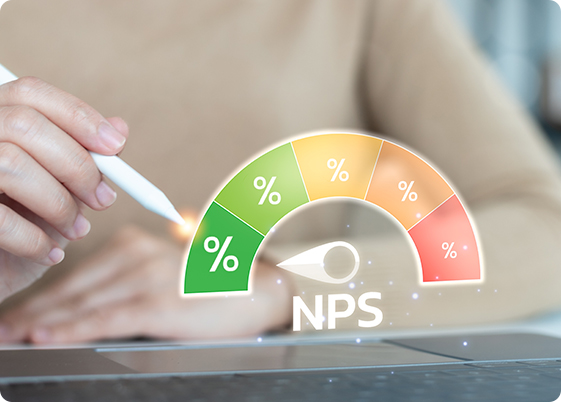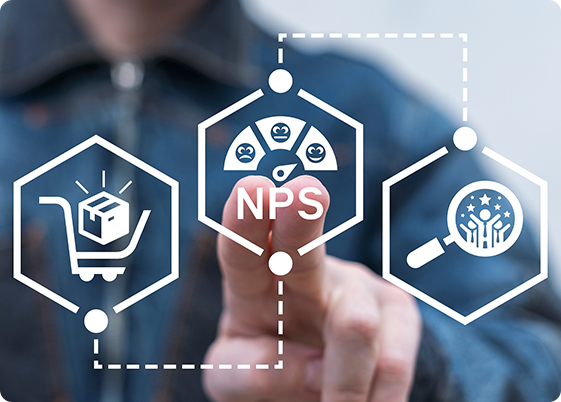
In today’s highly competitive market, retaining customers is as important as acquiring new ones. Customer satisfaction and loyalty are best gauged with Net Promoter Score (NPS). If you've ever wondered how to calculate NPS or how it can inform your customer service strategy, this guide walks you through a simple, step-by-step process and demonstrates how NPS can shape your customer service approach.
By the end, you’ll not only understand what is NPS but also how to use it to improve your business outcomes.
What is NPS
Before diving into “how to calculate NPS score”, it’s essential to understand what it means. The Net Promoter Score (NPS) measures how likely customers are to recommend your product or service. It is based on a single, core survey question:
“On a scale of 0 to 10, how likely would you recommend our company to a friend or colleague?” Responses provide insight into the customer experience and highlight trends in satisfaction.
Unlike some metrics, NPS is simple and actionable. So, if you have been wondering what a Net Promoter Score (NPS) is in business, NPS broadly reflects customers' perception of your brand.

Step-by-Step Process to Calculate NPS
Knowing how is NPS calculated is a systematic procedure, and if you are wondering in your head about "how the NPS score is calculated", follow this step-by-step explanation.
Here's an explanation:
Step 1: Collect Customer Responses
Begin by sending an NPS survey to your clients. It can be sent via email, mobile apps, or integrated into your website. To get consistent results, use the standard 0–10 NPS question and include an optional comment box.
Step 2: Classify the responses into 3 categories as Promoters, Passives, and Detractors
Once responses are collected, classify them into 3 groups:
- Promoters (9–10): Loyal enthusiasts who repurchase and refer others.
- Passives (7–8):Satisfied but unenthusiastic customers who could switch.
- Detractors (0–6):Dissatisfied customers who may discourage others.
Step 3: Calculate Promoters Percentage, Passives Percentage, and Detractors Percentage
Once all data is available, calculate the percentage for each category. For example, if you receive 400 responses in total and among them, 200 are promoters, then 50% of the respondents are promoters. Which answers your query “what is net promoter score”.
Step 4: Remove the Percentage of Detractors from the Promoters Percentage and get the NPS
And in the final step, the percentage difference between the promoters and detractors is equal to your NPS score. And if you are wondering, "How do you calculate net promoter score?", here's the easy formula to apply
NPS = % Promoters – % Detractors
For Instance, if 70% of your customers are promoters and 30% are detractors, your NPS will be 30.

How Often Should You Measure NPS
Knowing how to measure NPS is only half the battle. The measurement interval is also critical. Firms should measure NPS quarterly, but fast-moving industries may use monthly polls instead.
Regular measurement helps you identify trends, respond promptly, and continually improve. Over time, consistency creates reliable benchmarks.

How to Use NPS Data to Improve Your Business
Once you’ve learned how to get an NPS score, the next step is using that data to drive meaningful change. Here’s how:

Analyse Feedback
Beyond the score itself, qualitative feedback from customers provides valuable insights. Look for recurring themes in responses to understand the reasons behind high or low ratings.
Segment Your Data
Not all customers are the same. Segmenting NPS results by demographics, geography, or product lines helps identify which areas need improvement and where you’re performing well.
Turn Promoters Into Advocates
Promoters are your most valuable customers. Encourage them to share reviews, provide testimonials, and participate in referral programs. They can become brand ambassadors who drive organic growth.
Address Detractors' Concerns
Detractors often highlight gaps in your service or product. Use their feedback to make targeted improvements. By resolving their concerns, you can convert them into satisfied customers.
Close the Loop
Always follow up with customers who provide feedback. Whether positive or negative, acknowledging their input shows that you value their opinion. This step strengthens relationships and builds trust.
Importance of NPS in Customer Service
For businesses focused on customer support and contact centres, NPS is a powerful tool to measure customer satisfaction. It complements other key terms in customer support practices and helps identify how service interactions impact customer loyalty. By leveraging NPS insights, businesses can enhance overall service quality and employee training.
If you’re looking to build a long-term career in contact centres, understanding how to calculate and apply NPS can give you a competitive edge. It demonstrates your ability to use data to improve the customer journey and drive business outcomes.
Similarly, organisations that offer customer service jobs can use NPS results to motivate teams, improve KPIs, and build a customer-first culture.
Conclusion
The Net Promoter Score (NPS) is more than just a number it’s a reflection of your customers’ trust and loyalty. By learning how do I calculate NPS, businesses gain actionable insights into their customer relationships. The step-by-step approach gathering responses, classifying customers, and applying the NPS formula ensures accuracy and consistency.
However, the real value lies in how you use the data. By analysing feedback, segmenting results, nurturing promoters, and addressing detractors, you can transform NPS into a growth engine for your business.
Whether you’re new to customer service or managing an enterprise-level team, mastering NPS equips you with the tools to deliver exceptional experiences and strengthen customer loyalty. For real-world examples of customer-first operations at scale in India, organisations like HGS India demonstrate how NPS-driven insights can enhance service quality and loyalty.
Frequently Asked Questions (FAQs)
How do I improve a low NPS score?
Focus on addressing customer concerns quickly, enhancing service quality, and consistently following up on feedback.
What are the common mistakes to avoid when calculating NPS?
Avoid small sample sizes, irregular survey frequency, and ignoring qualitative feedback from customers.
How does NPS relate to customer experience (CX)?
NPS is a direct measure of customer loyalty, making it an essential part of the broader CX strategy.
What’s the best time of day to send an NPS survey?
Surveys typically perform best during business hours when customers are more likely to engage.
 Colombia
Colombia Canada
Canada India
India Jamaica
Jamaica Philippines
Philippines UK
UK US
US SA
SA
